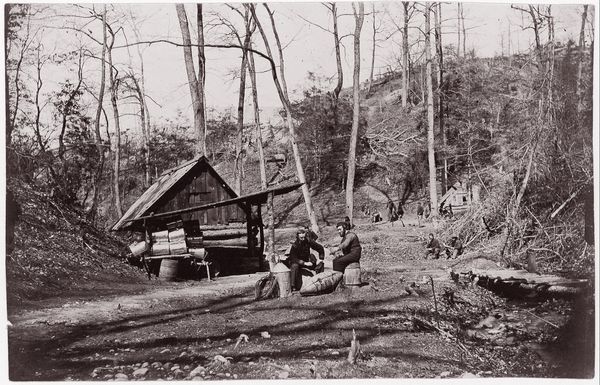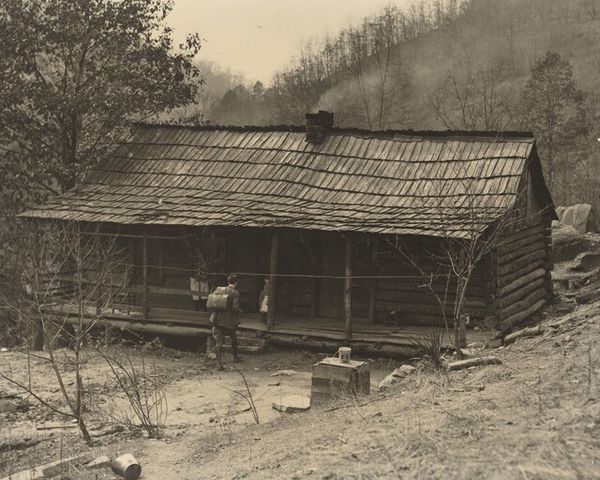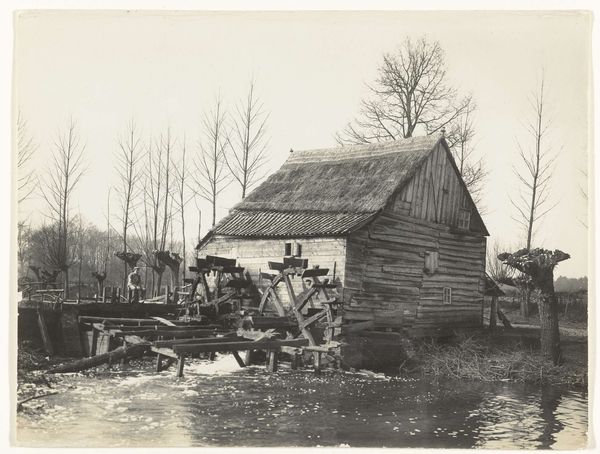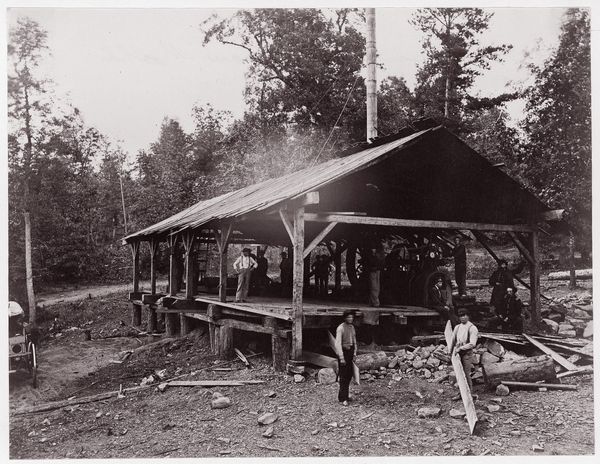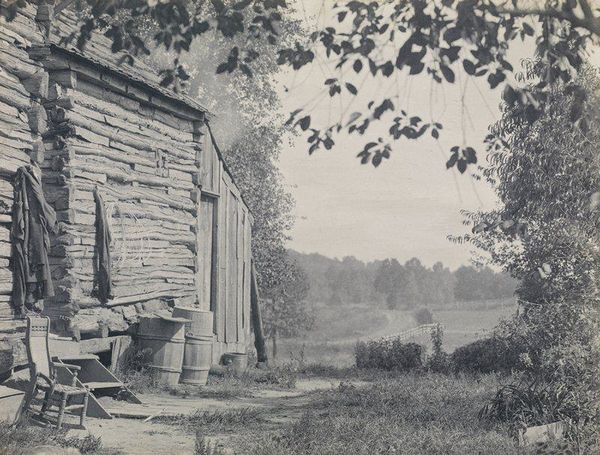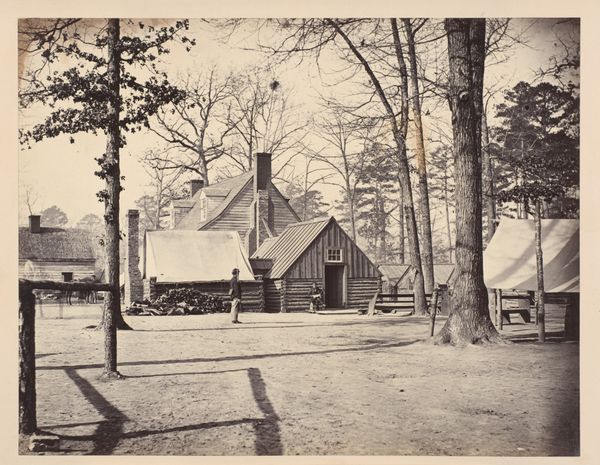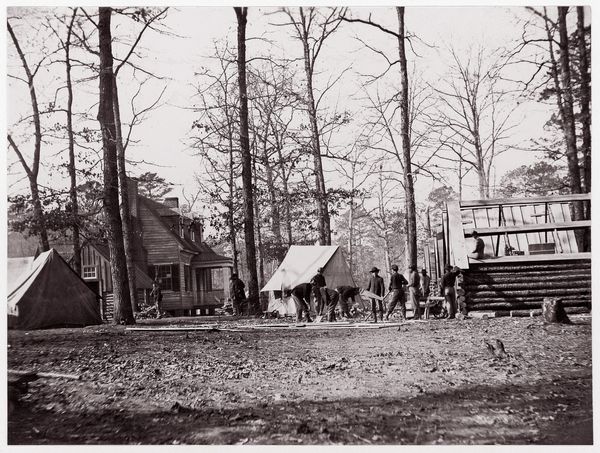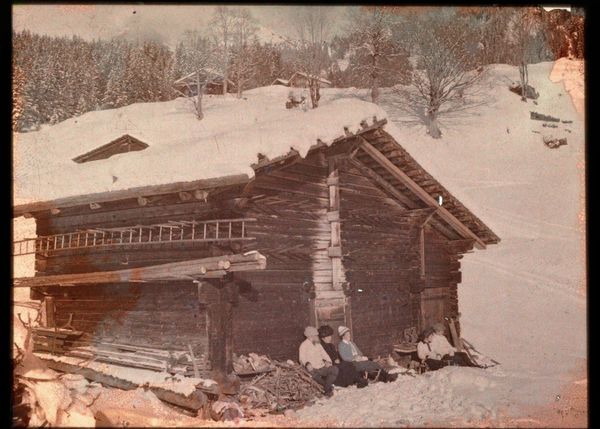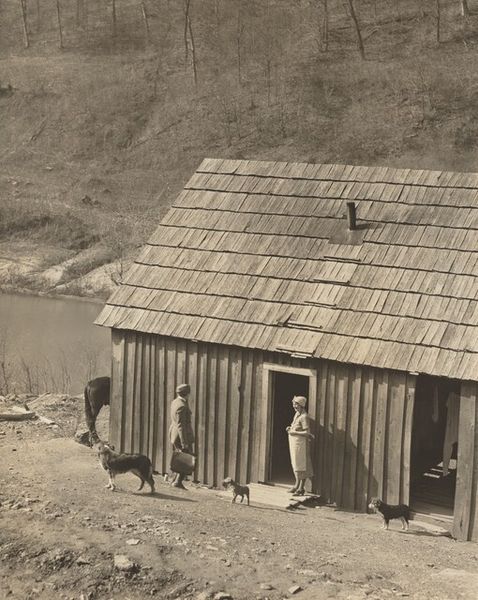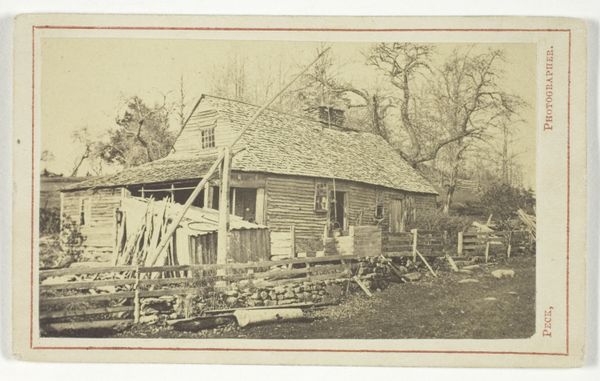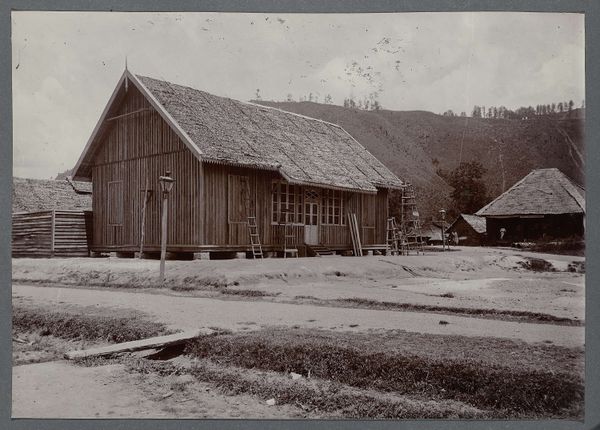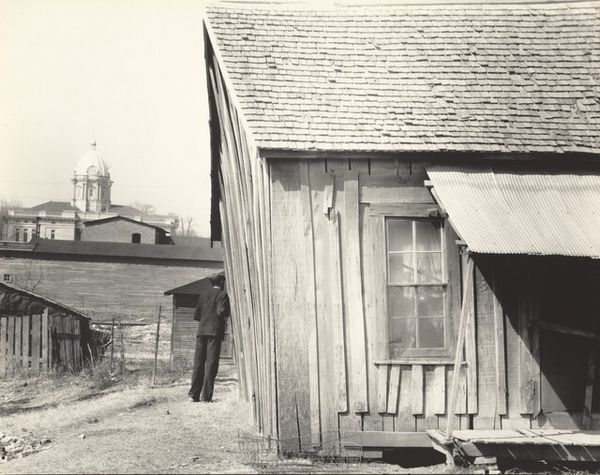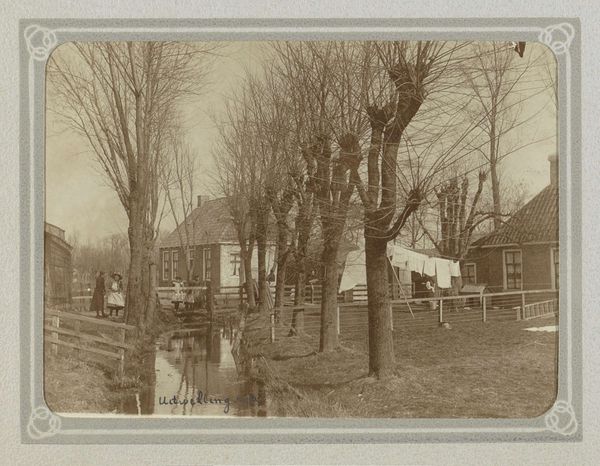![[Prof. Maillefert and Naval Officers Employed to Remove Gunpowder from Confederate Torpedoes, James River, Virginia] by Egbert Guy Fowx](/_next/image?url=https%3A%2F%2Fd2w8kbdekdi1gv.cloudfront.net%2FeyJidWNrZXQiOiAiYXJ0ZXJhLWltYWdlcy1idWNrZXQiLCAia2V5IjogImFydHdvcmtzLzZkYjJlMmVmLTdhN2QtNGYxNi1iOGRjLTk5ZjdkNWRlZmM5NS82ZGIyZTJlZi03YTdkLTRmMTYtYjhkYy05OWY3ZDVkZWZjOTVfZnVsbC5qcGciLCAiZWRpdHMiOiB7InJlc2l6ZSI6IHsid2lkdGgiOiAxOTIwLCAiaGVpZ2h0IjogMTkyMCwgImZpdCI6ICJpbnNpZGUifX19&w=3840&q=75)
[Prof. Maillefert and Naval Officers Employed to Remove Gunpowder from Confederate Torpedoes, James River, Virginia] 1865
0:00
0:00
photography, gelatin-silver-print
#
black and white photography
#
war
#
landscape
#
outdoor photograph
#
photography
#
soldier
#
gelatin-silver-print
#
monochrome photography
#
history-painting
#
monochrome
Dimensions: 12.9 x 19.6 cm (5 1/16 x 7 11/16 in.)
Copyright: Public Domain
Curator: Let's turn our attention to a photograph from 1865 titled, "Prof. Maillefert and Naval Officers Employed to Remove Gunpowder from Confederate Torpedoes, James River, Virginia," a gelatin-silver print currently residing here at the Met. It captures a moment right at the close of the American Civil War. Editor: Whoa. Just look at the starkness. It feels incredibly weary. The bare trees, the unadorned cabin, and those figures, just...slumped. The light feels almost hesitant, you know? As if even the sun isn't sure what to do now that the fighting's over. Curator: Precisely. Consider the historical weight. Here we have Professor Maillefert, a key figure in naval salvage, overseeing a profoundly dangerous task. Removing gunpowder from Confederate torpedoes was vital to ensuring safe passage on the James River and rebuilding efforts. Editor: Danger clinging to everything, even after the surrender. You can almost taste the gunpowder, feel the tension... But, there's also something very human here, wouldn’t you agree? Men just…waiting, perched on that log or sitting next to each other on the house’s porch. There’s a camaraderie in their shared weariness. Curator: Absolutely. This photograph, in its seemingly simple composition, speaks volumes about the immediate aftermath of the war. The labor, the risks, and the subtle shift in power dynamics are palpable. The choice to focus on this specific, arguably mundane, operation highlights the critical role of engineering and infrastructure in the process of reconciliation and Reconstruction. It reveals an interesting parallel, suggesting these seemingly simple operations held the most complexity, but are rarely remembered. Editor: Mundane maybe on the surface, but it shows a different side of peace, right? It’s not just signing papers. This is men risking life and limb still to erase the vestiges of war and make the waters safe again. Makes you wonder what happened to those faces perched by the walls, what they went on to do. Curator: Indeed. I'd add, though, the photograph offers a snapshot—excuse the pun—of a larger societal shift. Photography played an increasingly important role in documenting and shaping public perceptions of the war. Editor: Well said! It truly speaks to the layered history of a single, stark image. Curator: I concur; it’s quite sobering how powerfully that story emerges.
Comments
No comments
Be the first to comment and join the conversation on the ultimate creative platform.
